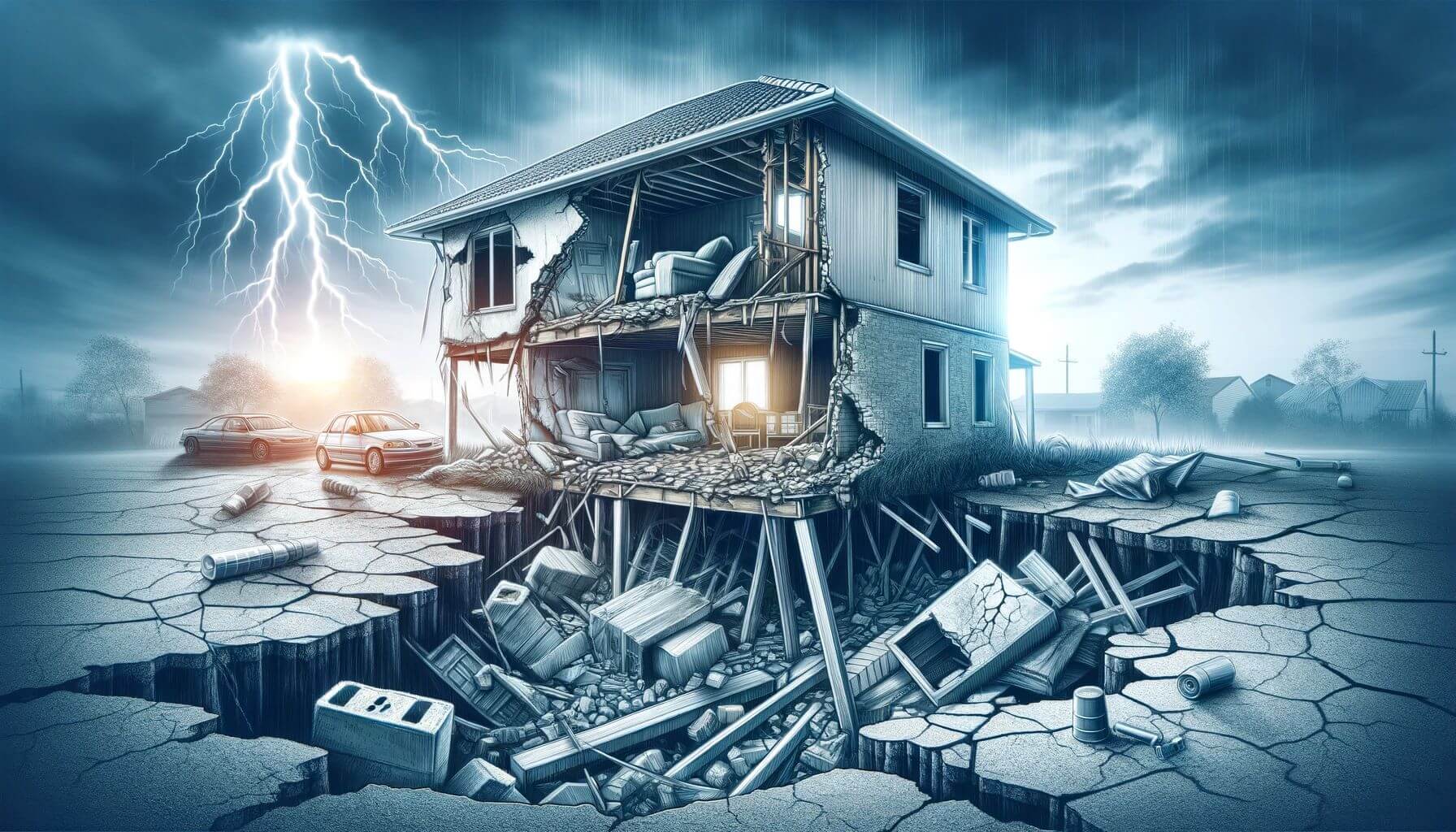
Homeowners often wonder about the extent of coverage their home insurance policy offers, especially when it comes to structural damage. Structural damage can range from issues with the foundation, walls, or roof that compromise the integrity of the entire building. Given the potential high costs associated with repairs, it’s crucial to understand whether your home insurance policy provides protection in such scenarios. We will dive into home insurance coverage for structural damage to offer you clarity and guidance.
What Constitutes Structural Damage?
Before discussing insurance coverage, it’s important to define what structural damage entails. Structural damage refers to any significant harm to the construction of the home that affects its core stability and safety. This can include, but is not limited to, foundation cracks, roof damage, and problems with load-bearing walls. Such damage not only poses a risk to the inhabitants but also significantly diminishes the property’s value.
Understanding Home Insurance Coverage
Home insurance policies typically cover a wide range of perils, including fire, wind, hail, and lightning strikes, which can cause structural damage to your home. However, the extent of the coverage can vary significantly based on the terms of your specific policy and the cause of the damage.
- Covered Perils: Most standard home insurance policies offer coverage for structural damage caused by specific perils listed in the policy. It’s essential to review your policy documents to understand which perils are covered.
- Exclusions: It’s equally important to be aware of the exclusions. Common exclusions often include damage due to earthquakes, floods, or poor maintenance. Homeowners may need to purchase additional coverage or separate policies to protect against these risks.

Special Considerations about Structural Damage Insurance Coverage
- Wear and Tear: Insurance companies typically do not cover damage resulting from normal wear and tear or lack of maintenance. Homeowners are expected to conduct regular maintenance to prevent such issues.
- Additional Coverage: For perils not covered under a standard policy, such as earthquakes and floods, homeowners may consider purchasing additional insurance. For example, flood insurance is available through the National Flood Insurance Program (NFIP).
- Deductibles and Limits: It’s crucial to understand your policy’s deductibles and coverage limits. The deductible is the amount you’ll need to pay out of pocket before your insurance coverage kicks in. Coverage limits determine the maximum amount the insurance company will pay for a covered loss.
Filing a Claim for Structural Damage Coverage
If you experience structural damage to your home, it’s important to document the damage thoroughly and contact your insurance company as soon as possible to file a claim. The claims process will typically involve an inspection by an insurance adjuster to assess the damage and determine coverage based on your policy.
Proactive Measures To Cover Structural Damage
To ensure you’re adequately protected, consider the following steps:
- Review Your Policy: Regularly review your insurance policy to understand your coverage and ensure it meets your needs.
- Consider Additional Coverage: If you’re in an area prone to earthquakes or floods, consider purchasing additional policies to cover these risks.
- Maintain Your Home: Regular maintenance can prevent issues that are typically not covered by insurance, such as damage from leaks due to neglected roofing.
Conclusion
Understanding whether home insurance covers structural damage involves a careful review of your policy’s terms, including covered perils, exclusions, deductibles, and coverage limits. By being proactive in understanding your coverage and taking steps to protect your property, you can navigate the complexities of home insurance with confidence, ensuring your home is protected against structural damage.



